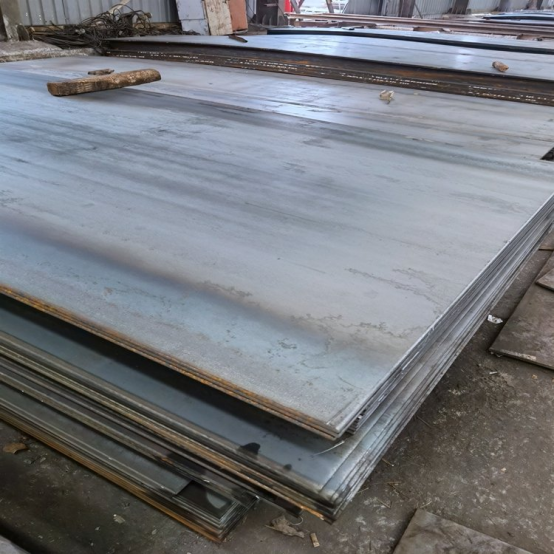Understanding Yield and Tensile Strength
When it comes to carbon steel plates, two critical metrics stand out: yield strength and tensile strength. Yield strength refers to the maximum stress a material can withstand without permanent deformation, while tensile strength measures the maximum stress it can endure before breaking. These two properties are often considered the lifeline of carbon steel plates, as they directly correlate to the load-bearing capacity of the material. In industries ranging from construction to automotive manufacturing, understanding these strengths is essential for ensuring safety and performance. After all, nobody wants a bridge that can’t hold its own weight!
The Hardness-Brittleness Dilemma
Now, let’s tackle the age-old question: why are some carbon steel plates hard but brittle, while others are soft and easily bendable? The answer lies in the composition and treatment of the steel. Hardness is often achieved through processes like quenching, which can make the steel strong but also prone to cracking under stress. On the other hand, softer steels are more ductile, allowing them to bend without breaking. The key to finding a balance between strength, hardness, and plasticity is in the alloying elements and heat treatment processes used during carbon steel coil production. It’s a delicate dance, much like trying to balance a spoon on your nose—one wrong move, and it all comes crashing down!
Hot-Rolled vs. Cold-Rolled Steel
When discussing carbon steel coils, it’s essential to differentiate between hot-rolled and cold-rolled steel. Hot-rolled steel is processed at high temperatures, making it easier to shape and form, but it often has a rough surface finish. Cold-rolled steel, on the other hand, is processed at room temperature, resulting in a smoother surface and tighter tolerances. While hot-rolled steel is typically used for structural applications, cold-rolled steel is favored for precision parts and aesthetic applications. So, whether you’re building a skyscraper or crafting a sleek car body, the choice between hot and cold-rolled steel can make all the difference!
Surface Treatments: Expanding Application Areas
Surface treatments for carbon steel plates, such as galvanizing, painting, and baking varnish, play a crucial role in enhancing their durability and expanding their application areas. Galvanizing, for instance, involves coating the steel with zinc to prevent rust, making it ideal for outdoor applications. Painting adds an aesthetic touch while providing a protective layer, and baking varnish offers a smooth finish that can withstand various environmental conditions. These treatments not only improve the longevity of carbon steel plates but also make them suitable for a wider range of industries, from automotive to construction.
Delivery States and Their Impact on Processing
Finally, let’s discuss the common delivery states of carbon steel plates—annealed, quenched, and tempered—and how they affect subsequent processing. Annealed steel is softened through heat treatment, making it easier to work with, while quenched steel is hardened for strength but may require additional tempering to reduce brittleness. Each delivery state has its own set of characteristics that influence how the steel can be processed and utilized. Understanding these states is crucial for manufacturers like Jindalai Steel Group Co., Ltd., as they strive to produce high-quality carbon steel coils and plates that meet the diverse needs of their clients. After all, in the world of steel, knowledge is power!
Post time: Oct-27-2025









